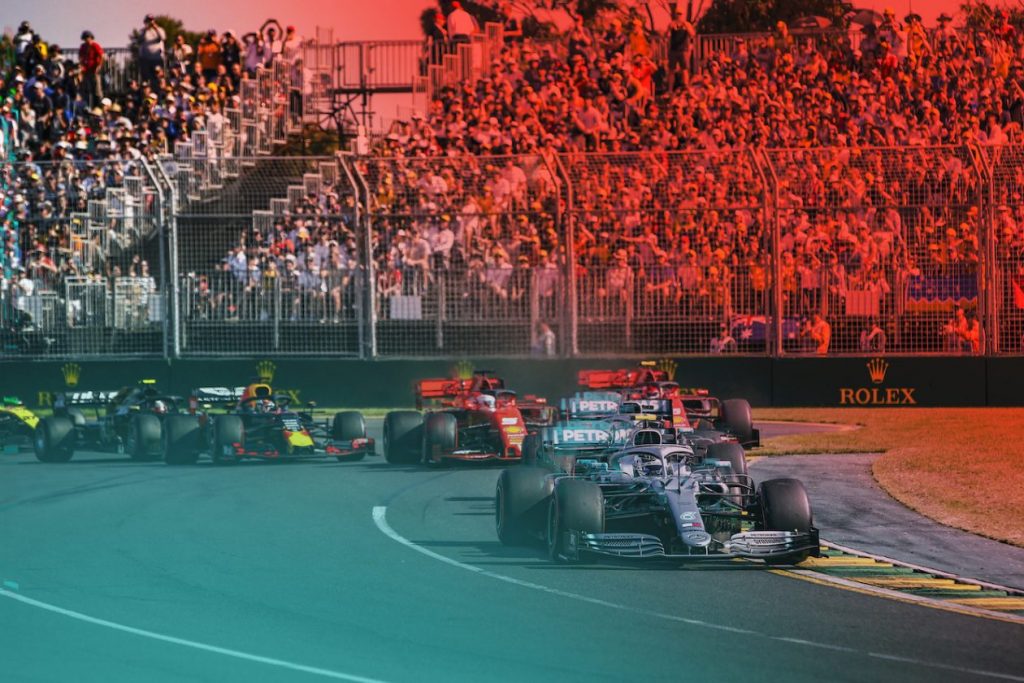[First published in B&T on 14 January 2021]
Last week’s announcement that the 2021 F1 Season opener – normally held at Melbourne’s Albert Park – will be moved to Bahrain due to COVID-19 travel restrictions might just be the best thing to happen to the Aussie F1 (and its sponsors) since the first race in 1996.

The event, normally be held on the weekend of 28 March, has always been hosted very close to Melbourne’s other big global sporting event of the year, the Australian Open tennis. But in 2021, with the AO pushed back to end 21 February, some in the industry had wondered if having the two biggest global sporting events in Australia so close together would be a good thing.
Pre-COVID it might have been argued that butting the events together might encourage international visitors to come Down Under for the ultimate double header, but given international visitation will be all but non-existent, would two massive drawcards side-by-side have been too much sport for even sports-mad Aussies to take?
The AO in 2020 saw a record breaking 812,174 attendees, with 13% (105,000) coming from overseas. Typical attendance of the F1 over the weekend in Australia is around 300,000 spectators, with a crowd more than 100,000 on race day, making it one of the best attended races on the current F1 calendar.
A recent Gemba TURF Analysis (Total Unduplicated Reach and Frequency) indicates that there is a significant overlap in fandom for motorsports and tennis amongst Australians – with 55% of motorsport fans being supporters of tennis also. With the AO and F1 in 2021 being totally reliant on domestic attendance, will separating the events in 2021 benefit both at the box office?
Given more than half (54%) of AO attendees last year came from outside of Melbourne, the event will also be heavily dependent on cross-border domestic travel – something that many predict will be less of an issue in the later half on the year as the COVID vaccine is rolled out. The downside may be a reduction in interstate attendees who may not be able to travel to Victoria on two separate occasions.
From a marketing point of view, sponsors of both events will likely benefit from increased clear space between the events. Not just within the venues themselves, but in the surrounding precincts.
Outdoor advertising space in and around the Melbourne CBD is notoriously expensive in February and March due to the increase in eyeballs and advertiser demand these events and their visitors generate.
So, brands wanting to promote their offers will now have two windows to target and might benefit from increased availability and lower rates.
Rolex and Emirates are the only two brands to sponsor both events so might have some challenges to overcome if they had combined their local efforts to promote both events back-to-back. Whilst the timekeeping partner has typically not heavily activated its partnership on ground at either event, Emirates has consistently had a large hospitality and media presence.
Finally, October and November are typically the quietest sporting months of the year in Australia (aside from a small window of Spring Racing early Nov). With footy finals completed and the summer of cricket yet to fully kick off it has been up for grabs for an astute operator to stake a claim to. So, whilst the decision to shift the F1 to November has most certainly been made as a public health and safety concern first and foremost, might this be the best change the event has ever made from the point of view of its sponsors and commercial partners? And if it is, will F1 globally consider making it a permanent new date on what it already a hectic global race calendar in 2022 and beyond?
Adam Hodge is Head of Marketing Strategy at Gemba